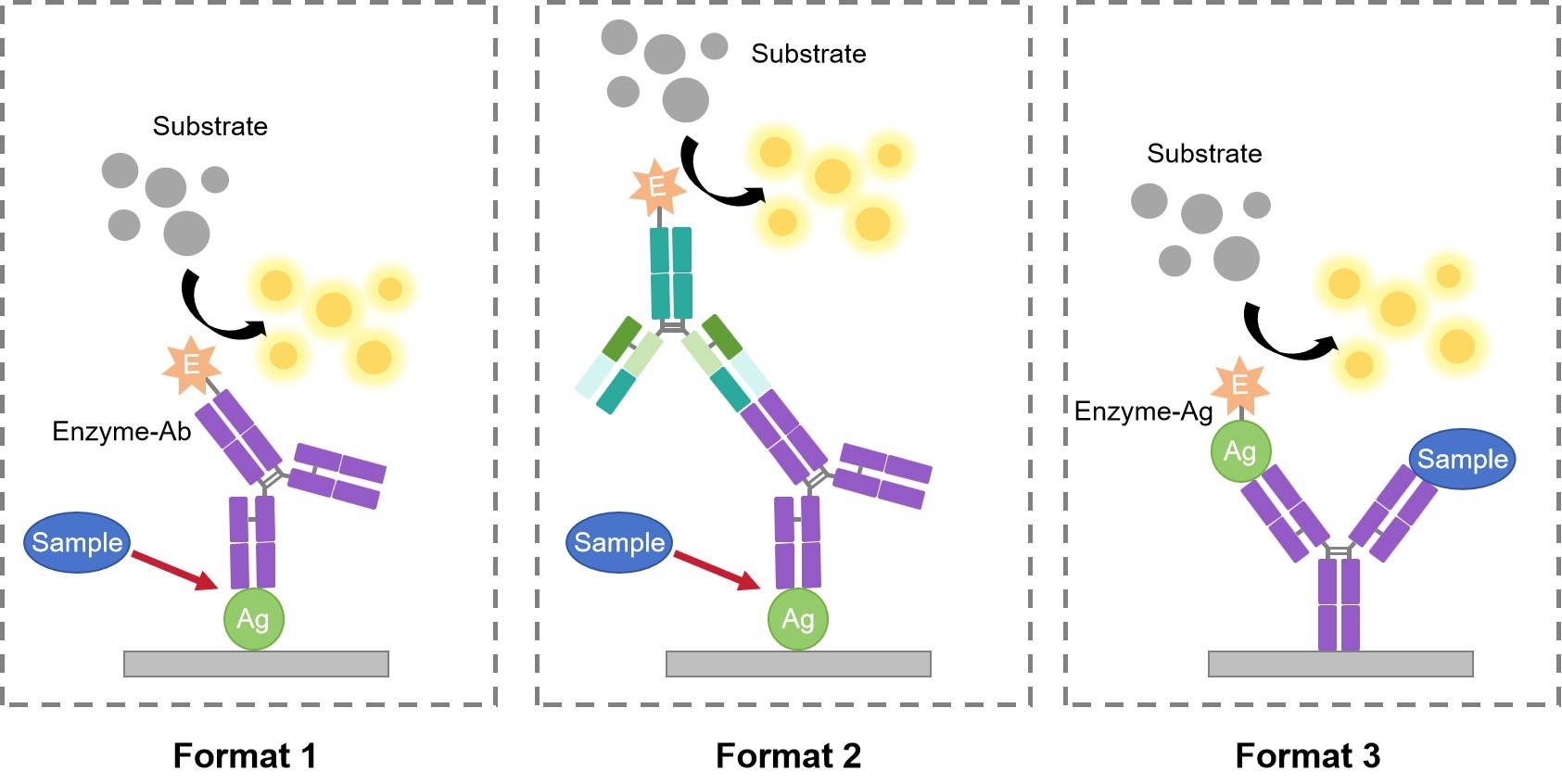The competition ELISA, also known as the blocking ELISA or inhibition ELISA, is perhaps the most complex of all the ELISA techniques. Direct, indirect, and sandwich all could be adapted to the competitive format. The competitive ELISA is predominantly used to measure the concentration of an antigen or antibody in a sample by detecting interference in an expected signal output. Sample antigen or antibody competes with a reference for binding to a limited amount of labeled antibody or antigen, respectively. The competition ELISA is very useful for determining the concentration of small-molecule antigens in complex sample mixtures. Direct competition ELISA incorporates labeled antigen while indirect competition ELISA use reporter-labeled antibody.
In the indirect competition ELISA (Format 1), known antigen standard is adsorbed onto the microtiter plate before incubation with sample and labeled antibody. Unbound antigen in sample and labeled antibody are washed away and substrate is then added. The amount of antigen in the sample determines the amount of labeled antibody bound to solid antigen, yielding a signal that is inversely proportional to antigen concentration within the sample. Thus, the higher the antigen concentration in the test sample, the less solid antigen is bound to the enzyme-labeled antibody, and hence the weaker is the resultant signal.
 Fig.1 The pattern diagram of antigen detection by competition ELISA.
Fig.1 The pattern diagram of antigen detection by competition ELISA.
In the indirect competition ELISA (Format 2), known antigen standards is adsorbed onto the microtiter plate before incubation with either primary antibody and unknown test samples. Unbound primary antibody and sample antigen are washed away. Secondary antibody and substrate are added successively. The amount of antigen in the sample determines the amount of reporter-labeled secondary antibody bound to primary antibody which directly bounds to solid antigen, yielding a signal that is inversely proportional to antigen concentration within the sample. Thus, the higher the antigen concentration in the test sample, the less solid antigen is bound to the primary and enzyme-labeled secondary antibody, and hence the weaker is the resultant signal.
In the direct competition ELISA (Format 3), antigen-specific capture antibody is adsorbed onto the microtiter plate before incubation with either known labeled standard antigen or unknown test samples. Unbound labeled standard antigen and unknow test antigen are washed away and substrate is added. The amount of antigen in the standard or the test sample determines the amount of reporter-labeled antigen bound to capture antibody, yielding a signal that is inversely proportional to antigen concentration within the sample. Thus, the higher the antigen concentration in the test sample, the less labeled antigen is bound to the capture antibody, and hence the weaker is the resultant signal.
Therefore, for the mentioned three formats, there is an inverse relationship between optical density (OD) and the amount of analyte in the sample.
Advantages
Disadvantages
Best for:
Competitive vs. Non-competitive
The distinguishing feature of a competitive assay format is that the combination of an unknown amount of analyte introduced from the sample and the reference analyte compete for binding to a limited number of antibody binding sites. This assay can be performed with either the analyte or the antibody adsorbed to the solid phase. Click here for the Protocol of Competition (Inhibition) ELISA. Our Troubleshooting of Competition (Inhibition) ELISA is also designed to help you improve and troubleshoot the common problems when performing competition ELISA.